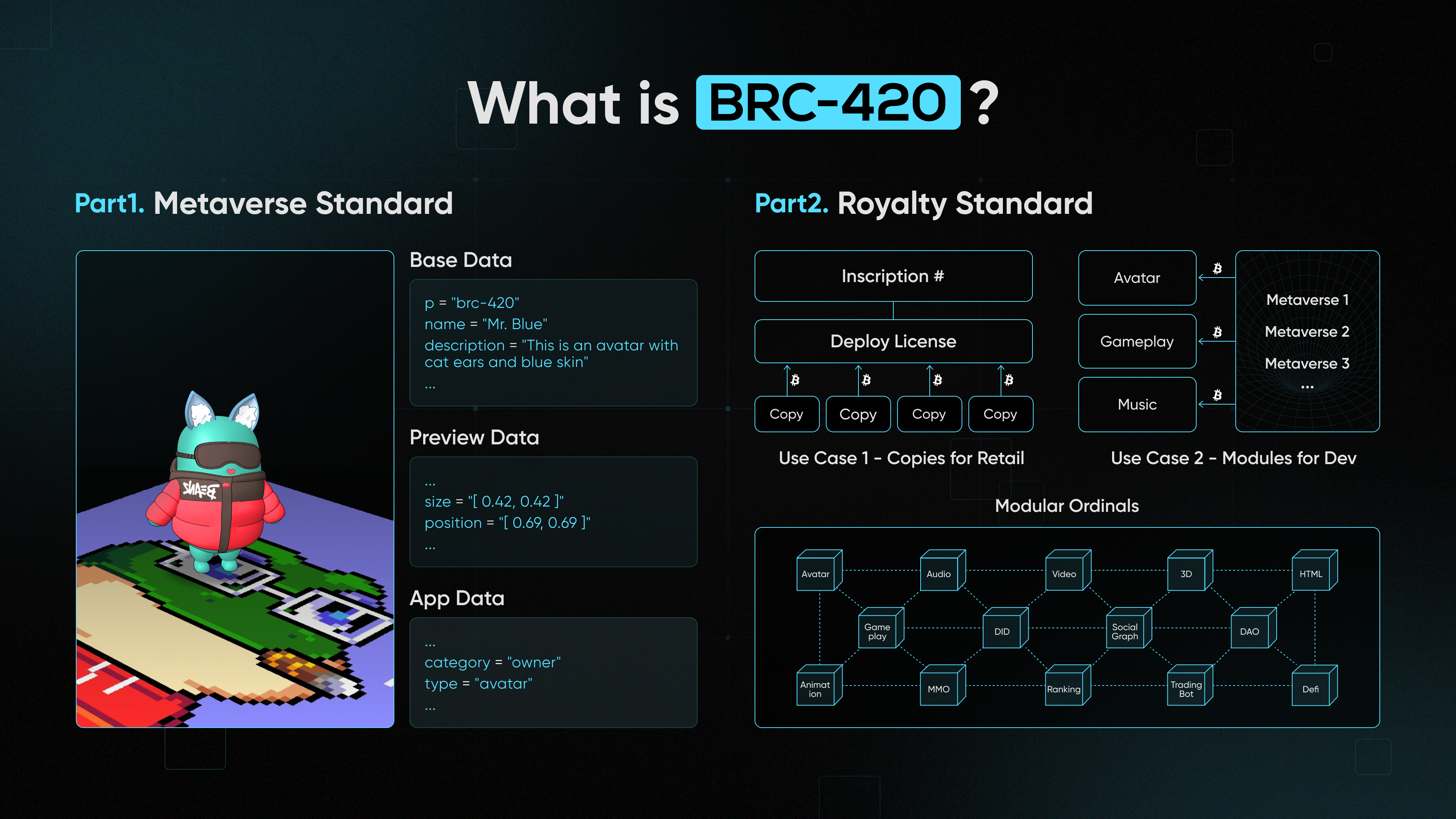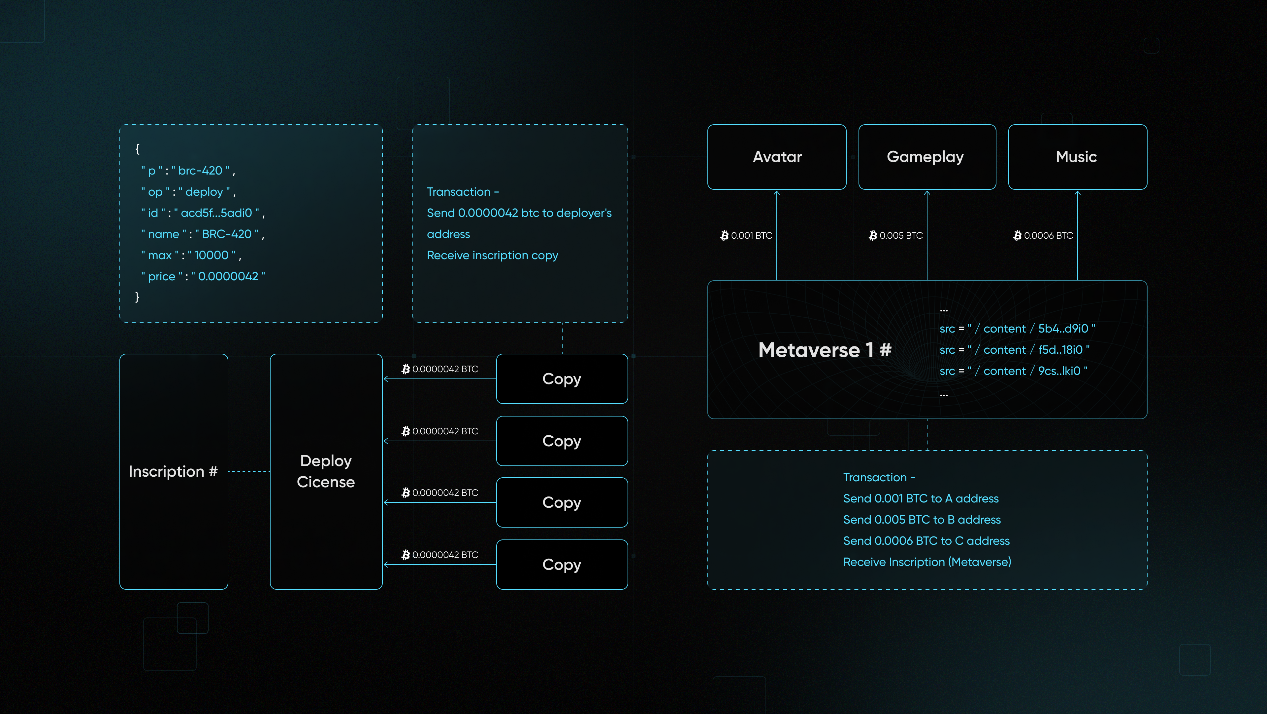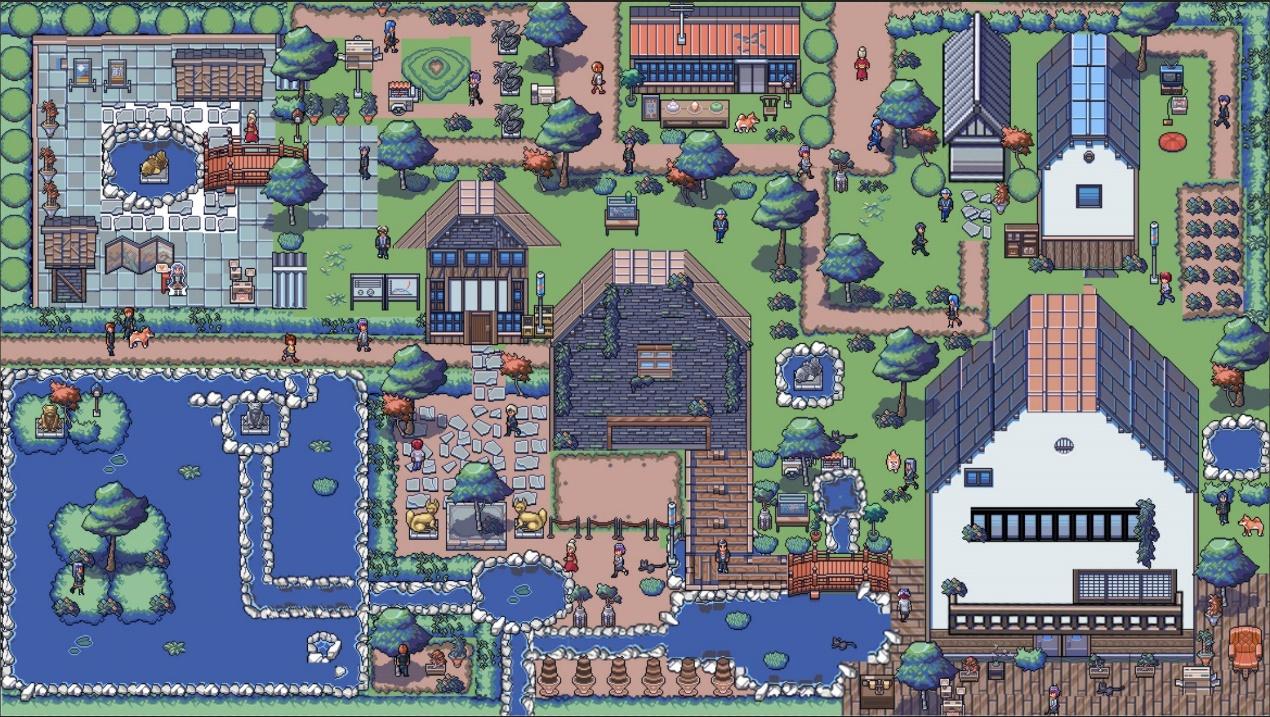The RCSV team released the BRC-420 protocol on September 19 (https://rcsv.gitbook.io/brc-420/), all documents are open sourced. According to RCSV’s description, the BRC-420 protocol breaks down the barriers of the BTC metaverse, injecting modularity and royalty features into it, allowing innovators to tap into BTC’s rich ecosystem.
At the same time, they launched the BRC-420 trading platform. Unexpectedly, it was briefly interrupted due to transaction overload within only 30 minutes of going online. The compensation and refund exceeded 200,000, which was considered a small episode.
1. What is the BRC-420 protocol?

According to the official Gitbook of RCSV, BRC-420 consists of two parts, one is Metaverse Standard (i.e. Metaverse Standard), and the other is Royalty Standard (i.e. Royalty Standard). The former defines an open format for assets in the Metaverse, while the latter The creator economy sets the on-chain protocol.
On-chain, open source, interoperable
Unlike full-chain games where ETH relies on IPFS services, BRC-420 brings all data under the umbrella of Bitcoin, and the information of BaseData, PreviewData and AppData is completely open to provide developers, users and even games on other chains. flexibility.
Modular, recursive royalty
BRC-420 adopts an avant-garde royalty strategy, implementing copyright management and modular billing for assets on Bitcoin. Creators only need to deploy a royalty module, set the price and quantity, and users can purchase the assets directly or reference them in new creations.
2. Explore the infinite possibilities of applications

According to RCSV officials, the application scenarios of BRC-420 are divided into two major categories, one is the copy retail model, and the other is module recursion. The former allows users to freely purchase genuine copies (such as musicians releasing songs), and the latter allows developers to use modules created by others (such as a combination of game modules).
In addition to these two major models, innovators can also explore other possibilities, such as the fan economy, where singers or KOLs can issue fan tokens to establish deeper connections.
3. Modular blockchain a new era of full-chain games?
On the occasion of the launch of the BRC-420, RCSV proposed an ambitious modularization strategy. After the creator has imprinted the game code, 3D assets, music videos, etc., other developers are free to recurse these modules,While accelerating secondary innovation, it also encourages original creators.
In addition, Ordinals is more in line with the concept of full-chain games. Unlike ETHs NFTs, which are stored on IPFS servers, the inscriptions of Ordinals are permanently engraved in BTC. As the first Bitcoin Metaverse Protocol, BRC-420 will boost this trend.
4. Bitmap RCSV: Bitcoin’s Metaverse Exploration
As the core asset of BTCs metaverse, Bitmap has more than 22,000 active users. RCSVs Bitmap browser (bitmap.rcsv.io) allows users to interact and trade assets with real-time voice. With the opening of BRC-420, more and more teams have begun to devote themselves to the new era of the Metaverse and launched a series of novel products.

5. Outlook of the BTC network
This year, with the birth of Ordinals, BTC activity has increased significantly - BTCs daily new addresses are around 500,000, while ETH has been below 100,000. There are already more than 33 million inscriptions on the chain, and the inscription fee for miners has exceeded 2,000 BTC.
At 2049 in September, Animoca Brand announced its investment in a metaverse on Ordinals, Yuga Labs also officially entered Ordinals, and various BTC Layer 2s are also undergoing intensive financing and construction.
With the BTC halving approaching and miners’ reliance on transaction fees increasing, can we expect a second spring for the Bitcoin network?